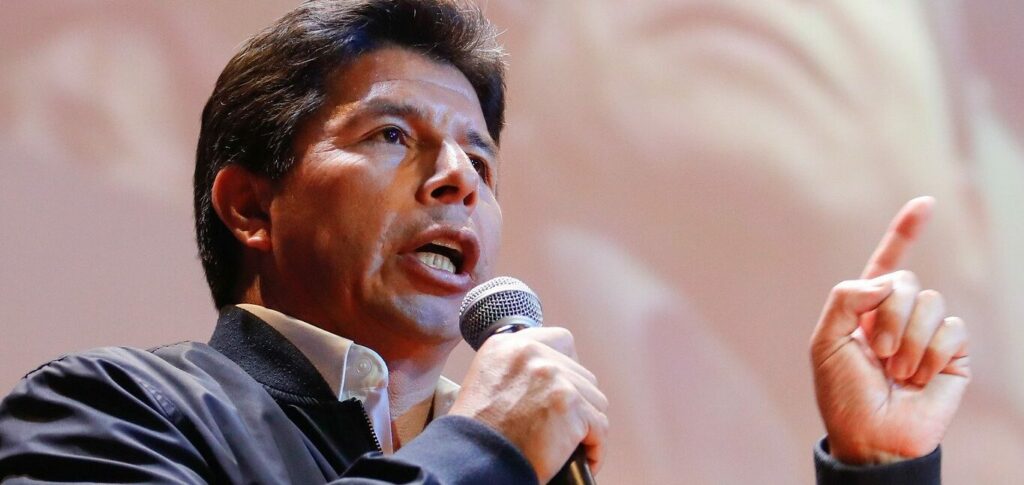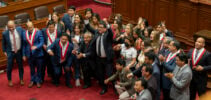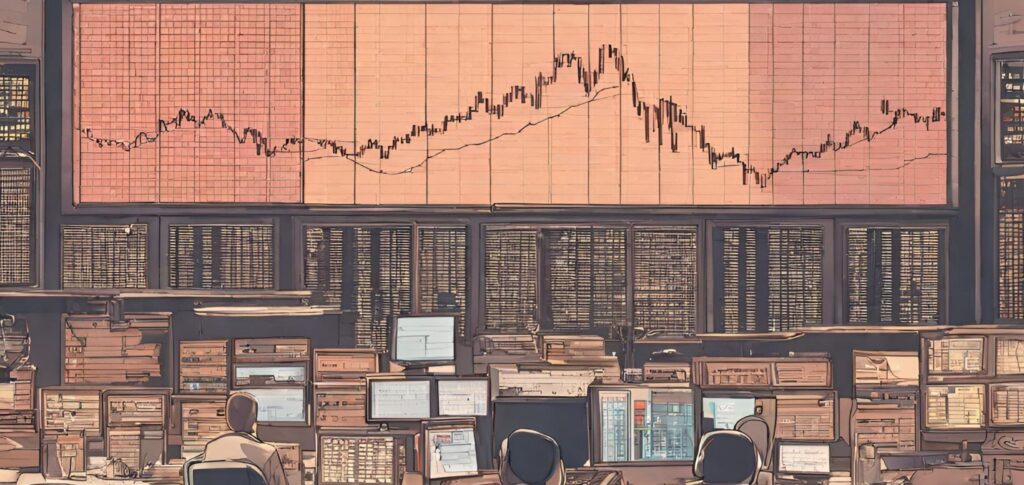- December 7: bet on the dissolution of Congress –
On December 7, Castillo, 53, in a televised message to the nation, dissolved Congress and said he would form an emergency government, impose a nighttime curfew and rule by decree.
ADVERTISING
The announcement came hours before Parliament debated his impeachment.
This was the third attempt to remove Castillo, since he, a rural teacher, surprisingly took power from the hands of the traditional political elite, in July 2021.
Peru's vice president, Dina Boluarte, denounced Castillo for attempting a “coup d'état”.
ADVERTISING
- December 7: impeachment, vice takes over
Congressmen dismiss Castillo's attempt to dissolve Congress and vote overwhelmingly to remove him from office for “moral incapacity”.
Castillo is transferred to a police base in eastern Lima and is arrested for “rebellion”.
Dina Boluarte, a 60-year-old lawyer, is sworn in within two hours of the impeachment vote and becomes Peru's first female president.
ADVERTISING
The new president says she intends to serve the remainder of Castillo's term, until July 2026.
Hundreds of protesters, some for and others against the ousted president, take to the streets of Lima.
- December 8: Supreme Court
The United States praises Peru for guaranteeing “democratic stability” and if withpromehas to work with Boluarte.
ADVERTISING
Visibly nervous, Castillo appears before the Supreme Court via video conference. The judge orders him to remain in preventive detention for seven days.
- December 10: increase in demonstrations
Demonstrations in favor of Castillo increase across the country with roadblocks and tire burning.
Boluarte presents a new cabinet, led by former prosecutor Pedro Angulo. This cabinet, with a technocratic and independent profile, includes eight women among the 19 ministries.
ADVERTISING
- December 11: two protesters killed
The protests turn bloody. Two people die and at least five are injured in Andahuaylas (south) when protesters try to take over the city's airport.
Police clash with protesters, who demand a national strike, new elections and Castillo's release.
Protests are increasing, especially in Andean cities and the north of the country.
- December 12: early elections –
Boluarte announces that he will present a bill to Congress to bring forward the elections by two years. He also imposes a state of emergency in some regions of the country.
Another five protesters die during protests demanding the resignation of the new president, bringing the number of deaths to seven.
- December 13: Justice rejects releasing Castillo and a strike for general elections begins
Castillo, accused of “rebellion” and “conspiracy”, remains detained at the National Directorate of Special Operations (Dinoes). A court rejects his appeal to revoke the arrest warrant against him, which expires on Wednesday, December 14.
The armed forces patrol the streets of several cities under a state of emergency with the police.
Demonstrations against Boluarte continue and there are numerous roads blocked in 13 of the country's 24 regions.
Lima is the scene of clashes between radical protesters and police, while agrarian and indigenous unions begin an “indefinite strike” demanding general elections.






